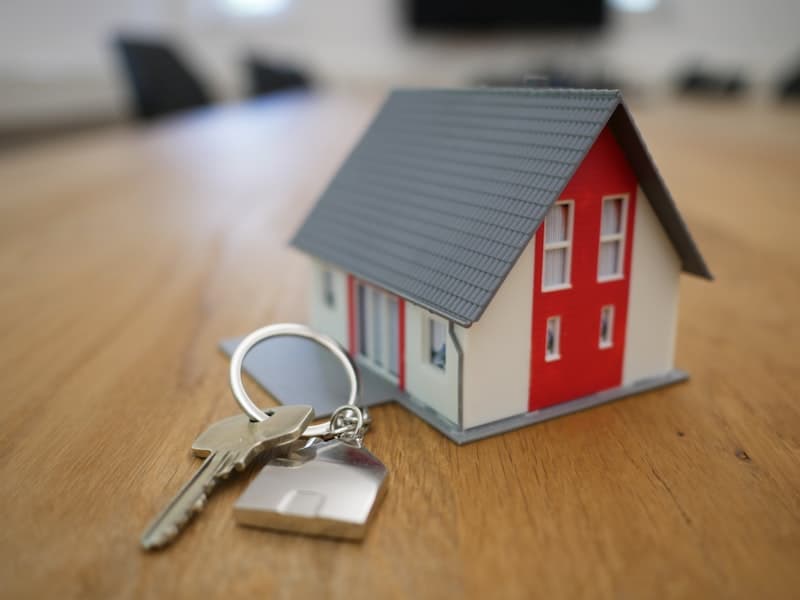Indoor air can be up to 5 times more polluted than outdoor air, making apartment air quality testing a critical concern for renters and property owners. Understanding how to assess and improve your apartment's air quality can protect your health and enhance your living environment.
Why Test Apartment Air Quality?
Hidden Health Risks
Many apartment air quality issues remain invisible until health problems develop:
- Respiratory irritation from chemical pollutants
- Allergic reactions to biological contaminants
- Chronic fatigue from poor ventilation
- Headaches from elevated pollutant levels
Unique Apartment Challenges
Apartments face specific air quality risks:
- Limited ventilation control compared to single-family homes
- Shared building systems that can distribute contaminants
- Unknown maintenance history of HVAC and ventilation systems
- Neighbor activities affecting air quality through shared walls and systems
Early Detection Benefits
Testing helps identify problems before they escalate:
- Prevent health issues through early intervention
- Document concerns for landlord communication
- Make informed decisions about living arrangements
- Protect vulnerable family members including children and elderly
Common Apartment Air Quality Issues

Modern apartment interior showing potential air quality monitoring locations
Poor Ventilation
Inadequate air circulation leads to:
- Stagnant air conditions that concentrate pollutants
- Elevated humidity promoting mold and bacteria growth
- Reduced oxygen levels affecting comfort and health
- Accumulation of cooking odors and other household emissions
Biological Contaminants
Apartment environments can harbor:
- Mold and mildew from moisture issues
- Dust mites in carpeting and upholstery
- Pet allergens from current or previous tenants
- Bacterial growth in HVAC systems and humid areas
Chemical Pollutants
Common sources include:
- Cleaning products and air fresheners
- Building materials and furnishings off-gassing
- Pesticide residues from building treatments
- Cooking emissions from gas appliances and food preparation
Neighbor-Related Issues
Shared living spaces can introduce:
- Secondhand smoke infiltration
- Chemical vapors from hobbies or activities
- Cooking odors and grease particles
- Pest control chemicals affecting multiple units
Testing Methods for Apartments
Indoor Air Quality Monitors

Air quality monitoring device displaying real-time measurements
Real-Time Monitoring Devices:
- Multi-parameter sensors measuring various pollutants simultaneously
- Continuous data collection providing ongoing assessment
- Smartphone connectivity for remote monitoring and alerts
- Historical data tracking showing trends over time
Key Measurements:
- Particulate matter (PM2.5 and PM10)
- Volatile organic compounds (VOCs)
- Carbon dioxide levels indicating ventilation adequacy
- Humidity and temperature affecting comfort and mold growth
Popular Monitor Options:
- Budget-friendly models ($50-150) for basic monitoring
- Mid-range devices ($150-400) with comprehensive features
- Professional-grade monitors ($400+) for detailed analysis
DIY Test Kits
Radon Testing Kits:
- Essential for ground-floor apartments and basements
- Short-term kits (2-7 days) for initial screening
- Long-term kits (90+ days) for accurate assessment
- Professional laboratory analysis included
Mold Testing Kits:
- Air sampling cassettes for airborne spore measurement
- Surface sampling for visible growth identification
- Petri dish cultures for basic screening (limited effectiveness)
- Professional interpretation recommended for accurate results
VOC Testing Kits:
- Passive samplers for chemical vapor detection
- Formaldehyde-specific tests for common apartment concern
- Multi-chemical analysis for comprehensive assessment
- Laboratory analysis providing detailed results
Professional Testing Services
When to Consider Professional Testing:
- Health symptoms correlating with time spent in apartment
- Visible mold growth or water damage evidence
- Strong chemical odors without obvious sources
- Respiratory issues developing after moving in
Professional Service Benefits:
- Comprehensive assessment covering multiple pollutants
- Expert interpretation of results and health implications
- Regulatory compliance when needed for legal issues
- Detailed reporting for landlord communication
Step-by-Step Testing Approach
Initial Assessment
Visual Inspection:
- Check for visible mold or water damage
- Identify potential pollutant sources
- Assess ventilation adequacy
- Document any concerning odors
Basic Monitoring:
- Install carbon monoxide detectors immediately
- Use a simple air quality monitor for baseline readings
- Monitor humidity levels (ideal range: 30-50%)
- Track any correlation with health symptoms
Targeted Testing
Based on Initial Findings:
- High humidity readings: Conduct mold testing
- Chemical odors: Perform VOC analysis
- Respiratory symptoms: Consider allergen testing
- Ground floor location: Test for radon
Seasonal Considerations:
- Winter testing: Focus on heating system emissions and reduced ventilation
- Summer testing: Assess humidity control and air conditioning performance
- Spring/Fall: Monitor for seasonal allergens and ventilation changes
Follow-Up Monitoring
Ongoing Assessment:
- Regular monitor readings to track changes
- Seasonal re-testing for variable conditions
- Post-improvement verification after addressing issues
- Documentation for lease renewal or moving decisions
Interpreting Test Results
Air Quality Monitor Readings
Particulate Matter (PM2.5):
- Good: 0-12 μg/m³
- Moderate: 12-35 μg/m³
- Unhealthy for sensitive groups: 35-55 μg/m³
- Unhealthy: Above 55 μg/m³
VOC Levels:
- Excellent: 0-220 ppb
- Good: 220-660 ppb
- Fair: 660-2200 ppb
- Poor: Above 2200 ppb
Carbon Dioxide:
- Excellent: Below 600 ppm
- Good: 600-1000 ppm
- Acceptable: 1000-1500 ppm
- Poor: Above 1500 ppm
Professional Test Results
Mold Analysis:
- Compare indoor spore counts to outdoor baseline
- Identify specific species and potential health risks
- Assess moisture conditions supporting growth
- Evaluate need for remediation
Chemical Testing:
- Compare results to health-based guidelines
- Identify specific chemical sources
- Assess cumulative exposure risks
- Evaluate ventilation adequacy
Taking Action on Poor Results
Immediate Steps
Safety First:
- Increase ventilation when possible
- Remove obvious sources of contamination
- Use air purifiers with HEPA and carbon filters
- Avoid activities that worsen air quality
Communication with Landlord:
- Document all findings with photos and test results
- Present health concerns professionally
- Request specific improvements based on test results
- Follow up in writing to maintain records
Long-Term Solutions
Ventilation Improvements:
- Request HVAC maintenance and filter changes
- Install window fans for cross-ventilation
- Use exhaust fans in kitchen and bathroom
- Consider portable air exchangers for better circulation
Moisture Control:
- Use dehumidifiers in humid areas
- Report water leaks immediately
- Improve bathroom ventilation to reduce humidity
- Address condensation issues on windows
Source Elimination:
- Choose low-VOC products for cleaning and personal care
- Remove or seal off-gassing materials when possible
- Control cooking emissions with proper ventilation
- Address pest issues without excessive chemical use
Health Considerations
Immediate Health Effects
Common symptoms of poor apartment air quality:
- Respiratory irritation: Coughing, wheezing, shortness of breath
- Eye and throat irritation: Burning, itching, dryness
- Headaches and fatigue: Especially when at home
- Skin reactions: Rashes, irritation, or sensitivity
At-Risk Populations
Special considerations for:
- Children: More vulnerable to pollutants due to developing systems
- Elderly individuals: May have compromised respiratory or immune systems
- People with asthma: Increased sensitivity to triggers
- Pregnant women: Potential risks to developing babies
When to Seek Medical Attention
Contact healthcare providers if:
- Symptoms persist despite air quality improvements
- Respiratory issues worsen or become severe
- Multiple household members develop similar symptoms
- Symptoms improve when away from apartment
Budget-Friendly Testing Options
Low-Cost Monitoring
DIY Solutions:
- Basic air quality apps using smartphone sensors
- Simple humidity meters ($10-30)
- Carbon monoxide detectors ($20-50)
- Basic particle counters ($30-100)
Free Resources:
- Local health department testing programs
- University extension services offering testing
- Utility company indoor air quality assessments
- Non-profit organization testing assistance
Cost-Effective Professional Testing
Targeted Testing:
- Single-parameter tests focusing on specific concerns
- Screening-level assessments for initial evaluation
- Group testing programs reducing individual costs
- Seasonal testing specials from local providers
Renter Rights and Responsibilities
Legal Considerations
Tenant Rights:
- Habitable living conditions including adequate air quality
- Response to health hazards reported to landlords
- Access to building maintenance records in some jurisdictions
- Right to test apartment air quality
Documentation Requirements:
- Written communication with landlords about concerns
- Test results supporting health or safety claims
- Medical documentation linking symptoms to air quality
- Photos and videos of visible problems
Working with Property Management
Effective Communication:
- Present facts professionally using test results
- Focus on health impacts rather than personal preferences
- Suggest specific solutions based on testing findings
- Maintain written records of all communications
Collaborative Approach:
- Offer to share testing costs for mutual benefit
- Suggest building-wide improvements benefiting all tenants
- Participate in solutions that don't require major investment
- Recognize limitations of rental property modifications
Technology and Smart Home Integration
Smart Monitoring Systems
Connected Devices:
- WiFi-enabled monitors for remote access
- Integration with smart home systems for automated responses
- Alert systems for immediate notification of problems
- Data sharing with healthcare providers when appropriate
Advanced Features:
- Predictive analysis identifying trends
- Automated ventilation control responding to air quality
- Integration with weather data for comprehensive assessment
- Multi-location monitoring for comprehensive coverage
Mobile Apps and Platforms
Monitoring Applications:
- Real-time data access from anywhere
- Historical trend analysis showing patterns
- Health correlation tracking connecting symptoms to exposures
- Sharing capabilities for professional consultation
Seasonal Testing Considerations
Winter Testing
Focus Areas:
- Heating system performance and emissions
- Reduced ventilation effects on air quality
- Increased indoor time amplifying exposure
- Holiday activities affecting indoor air
Summer Testing
Key Concerns:
- Air conditioning performance and humidity control
- Increased outdoor pollution infiltration
- Higher temperatures affecting off-gassing rates
- Vacation absences allowing problems to develop
Spring and Fall
Transitional Periods:
- HVAC system changes affecting air circulation
- Seasonal allergens entering indoor spaces
- Temperature fluctuations affecting humidity
- Building maintenance activities potentially affecting air quality
Conclusion
Testing your apartment's air quality is an essential step in protecting your health and ensuring a comfortable living environment. Whether using simple monitors for ongoing assessment or professional services for comprehensive analysis, understanding your apartment's air quality empowers you to take appropriate action.
Don't let poor air quality compromise your health and well-being. Start with basic monitoring to identify potential concerns, then pursue targeted testing as needed to address specific issues. Remember that good communication with property management, combined with solid testing data, provides the best foundation for improving apartment air quality.
For professional apartment air quality testing and consultation, contact Air Allergen & Mold Testing. Our certified professionals provide comprehensive assessments and practical solutions for apartment dwellers seeking healthier indoor environments.
